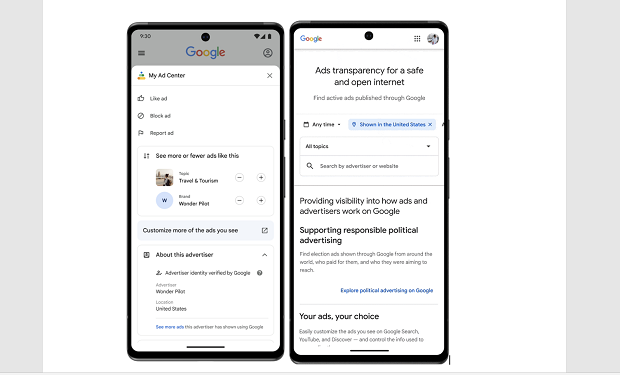Last March 29, along with the publication of their 2022 Ads Safety Report, Internet titan Google has launched the Ads Transparency Center to provide users with more knowledge about the ads they’re exposed to.

When explaining the rationale behind the new tool, Alejandro Borgia, Google’s director of ads privacy and safety, stated: “We heard loud and clear from users that they want to know more about the ads they see. In particular, who’s behind the ads? Who’s actually advertising to them?”
The Ads Transparency Center is a searchable library that will help Google users confirm an ad and its advertiser’s trustworthiness.
By building on Google’s advertiser identity verification program that authenticates advertisers in more than 240 regions, the new tool enables users to search for information about verified advertisers and all the ads they’ve run in the past 30 days.
The tech company is gradually rolling out the Ads Transparency Center to all regions globally. Within a few weeks, users all over the world can access it through their Ads Center or through http://adstransparency.google.com.
Besides taking steps to be more open to its users, Google’s advertising platforms are constantly upgraded to keep pace with the ever evolving online scam landscape.
As detailed in the company’s 2022 Ads Safety Report, Google blocked over 5.2 billion ads, restricted 4.2 billion, and suspended over 6.7 million advertiser accounts, as well as launched or updated 29 advertiser and publisher policies.
Borgia spotlighted two categories of ads blocked for violating company policies.
Specifically, 198 million were removed for infringing on Google’s policies for financial products and services and 142 million were taken down for participating in misrepresentation, including clickbait and phishing schemes.
Google also has categories of ads that they restrict or in other words, allow to be advertised with certain limitations.
Of the billions of ads restricted in 2022, 550 million of these belonged to restricted businesses, 503 million were limited due to local legal requirements, and 237 million were restricted because they marketed financial services.
Other categories with constraints include healthcare and medicines, copyright, gaming and gambling, adult content, and alcohol.
On the other hand, the policies updated last year covered three main areas, financial services and certification expansion, expanding protections for teens, and strengthening election ads policies.
Borgia also stressed that misinformation has been a concerning issue for Google’s advertising platforms due to the worsening impact of fake news in current years.
Since 2019, the technology company has established or expanded policies to address false claims that undermine trust in democratic processes, harmful health claims regarding Covid-19, and claims that contradict scientific consensus around the existence and causes of climate change.
In 2022, more than 24 million ads were blocked and over 300,000 pages were demonetized for promoting content that violated these policies and spread misinformation.
“All our policies are based on relying on experts across the world to understand what the policy topic is and what misinformation might happen…then [we] craft our policies specifically to understand what the contours of the space look like and what our policy should look like,” Borgia said as he outlined the process of producing a misinformation policy.
Borgia asserted: “When it comes to unreliable claims, information quality is always top priority. In recent years, we’ve invested a lot in expanding our policies to address unreliable claims and misinformation on our advertising platforms.”




